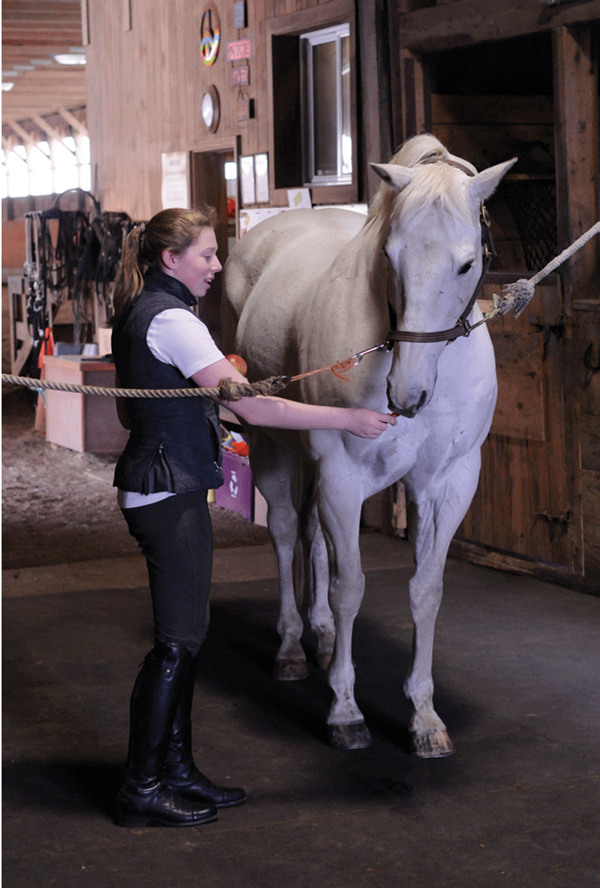 Since horses are designed to eat for long periods of time, they will find something to nibble or lick after quickly consuming a sweet treat. | © Dusty Perin
Since horses are designed to eat for long periods of time, they will find something to nibble or lick after quickly consuming a sweet treat. | © Dusty PerinQ: Whenever I give my warmblood mare a treat while she’s in the cross-ties, she eats it then turns to chew on the left metal cross-tie. Even when I took her off the cross-ties and gave her a treat, she turned left and moved her lips. Once she realized there was no chain, she stopped. I don’t mind this habit or consider it bad training. I just would like to know why she does it.
Katherine A. Houpt, VMD, PhD, DACVB
A: Your mare’s behavior is not all that unusual. Research has shown that when horses consume something sweet quickly, they are still motivated to eat. Horses are designed to eat high-fiber diets of grass, which requires them to spend a lot of time grabbing, chewing and swallowing the food. When we give them a lot of calories in a small package, however, they haven’t spent the required time feeding so they find something else to nibble or lick. The cross-ties are just the nearest thing for her to mouth, and horses seem to prefer things made of metal for these activities.
She may always turn to the left because, just as people are right- and left-handed, horses are definitely handed, preferring to turn one way, take one lead or choose one side over the other. Also, you probably spend more time on her left side fastening the first cross-tie and throatlatch and that might also influence her. You could put her in the cross-ties facing the opposite direction to see whether it is her left or that particular chain she prefers.
Although cribbing is an abnormal behavior, occurring in about 5 percent of horses, it follows the same pattern as your mare’s chewing after a treat. Horses are most likely to crib right after they eat sweet feed. In fact, if you want to demonstrate the behavior to a group of Pony Clubbers, just give a cribbing horse a sugar cube.
Another example of this type of behavior is a calf who drinks milk from a pail and then tries to suckle on her pen mate. Normally the calf would have to suckle from a cow’s teat for 10 minutes to acquire the amount of milk she just swallowed in two minutes. Because she is genetically programmed to suckle for 10 minutes, she finds something else on which to suckle.
I am glad you aren’t going to stop your mare from doing it because it is harmless and makes her feel less frustrated. Horses have a lot worse habits than this one. Of course, you could stop giving her treats while she is cross-tied, but I am sure she likes to receive them.
Katherine A. Houpt, VMD, PhD, DACVB, treats a variety of behavior problems in dogs, cats and horses. She taught in and oversaw the Animal Behavior Clinic at Cornell University’s College of Veterinary Medicine for 35 years before starting her current consulting business, Animal Behavior Consultants of Northern Michigan (www.abcofnm.com). Board-certified by the American College of Veterinary Behaviorists, she published the textbook Domestic Animal Behavior and numerous scientific articles.
This article originally appeared in the October 2015 issue of Practical Horseman.









